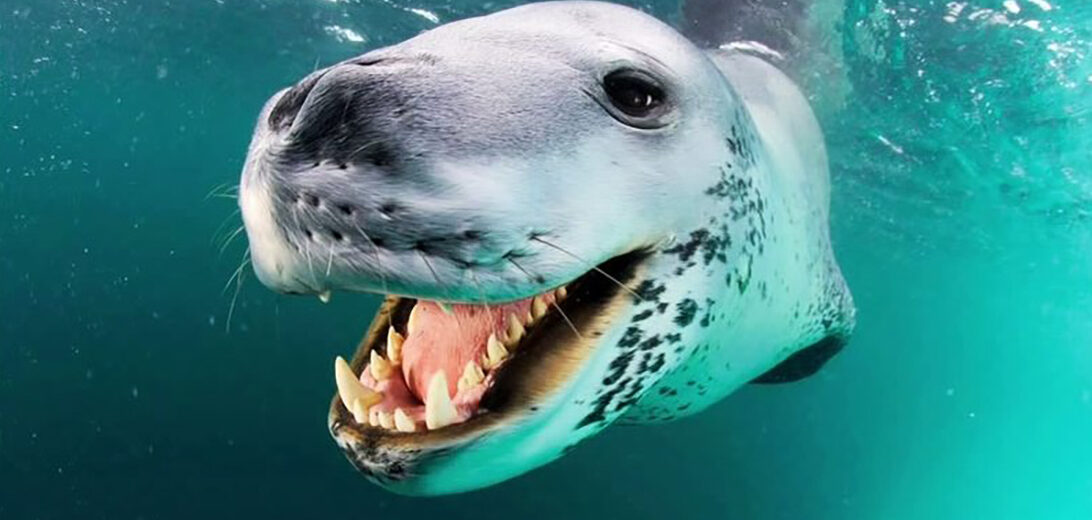
Ranked as the third largest pinniped (seal) in the world, after the walrus and the elephant seal, the leopard seal is an amazing creature that can be both fascinating and dangerous at the same time. Leopard seals live in the Antarctic and sub-Antarctic waters of the Southern Hemisphere. They occur from the coast of the Antarctic continent northward through the pack ice and around many sub-Antarctic islands. Due to their solid numbers, they are listed as Least Concern by the IUCN.
First the Stats…
Scientific name: Hydrurga leptonyx
Weight: Up to 1,300 lbs.
Length: Up to 10 feet
Lifespan: Up to 26 years
Now on to the Facts!
1.) These seals can swim up to 25 mph!
2.) Being seals, not sea lions, they do not have visible ear flaps.
3.) Orcas are the only known predator of leopard seals.
4.) They prey on krill, fish, squid, Antarctic species of penguins, sea birds, crabeater, Weddell, young elephant seals, and fur seals.
5.) Leopard seals are not social animals. They are solitary creatures that only come together to breed.
But wait, there’s more on the leopard seal!
6.) They are very aggressive seals! These creatures will not hesitate to attack, if they feel encroached upon.
7.) Females go through a delayed implantation. This means they breed a few months before they actually become pregnant.
Did you know…?
Leopard seals have been filmed feeding wildlife photographers, bringing them dead or nearly dead penguins; perhaps in an effort to teach them how to hunt.
8.) During breeding season, the males will sing underwater to attract a mate.
9.) Their pectoral claws and 1.5 inch canine teeth make them a feared predator.
10.) Much like a cat, these seals will actually play with and taunt their prey. They will even play with their meals after they’re dead.
11.) In a testament to their dangerous potential, 1 female scientist was dragged 200 feet underwater, to her death, by a leopard seal.
Now a Short Leopard Seal Video!
Also, check out the Critter Science YouTube channel. Videos added frequently!
Want to suggest a critter for me to write about? Let me know here.




Leave a Reply